This article was co-authored by Mor Levy Volner, IBCLC, RDN. Mor Levy Volner is an International Board Certified Lactation Consultant based in Southern California. She earned a BS in Clinical Nutrition from the University of California, Davis in 2009 and finished her Lactation Consultant course from the University of California, San Diego Extension Program in 2013, which included 300 hours of lactation consulting experience from Kaiser Permanente. She also has an MS in Dietetics/Nutrition from the California State University - Northridge in 2014.
There are 8 references cited in this article, which can be found at the bottom of the page.
wikiHow marks an article as reader-approved once it receives enough positive feedback. In this case, several readers have written to tell us that this article was helpful to them, earning it our reader-approved status.
This article has been viewed 670,427 times.
With so much advice on how to lose weight out there, it's hard to know where to start. The good news is that you don't have to buy fancy equipment or diet books to start losing fat. Creating a plan that makes sense for your physical needs and sticking to it is the best way to slim down. That doesn't sound so bad, does it?
Steps
Jump-Starting Fat Loss with a New Diet
-
1Consume a well-rounded balance of protein and fat.[1] Studies show that eating lean proteins like chicken, lean beef, beans, and healthy fats found in fish, avocados, nuts, and seeds promotes fat loss. Choose proteins and fats that are hormone-free and unprocessed.
- Consuming 1200 mg calcium per day may help you reduce your body fat. Aim for three servings of dairy a day. Choose products made from skim milk to lower the number of calories you take in from dairy each day.[2]
- Choose olive oil and grapeseed oil over canola oil and butter when you cook.
-
2Drink a lot of water. Studies show that drinking plenty of water actually increases the body's metabolic rate, leading to more fat loss. Aim for 2 litres of water per day, more if you're active.[3]
- Replace alcohol, soda (including diet soda), coffee, and other drinks with water.
- Start your day by drinking a large glass of water when you wake up, before you eat breakfast.
Advertisement -
3Eat breakfast every day. Starting your day off with a healthy breakfast gives you the right foundation for eating well all day long.[4] Because your metabolism slows down at night, eating breakfast in the morning can boost your metabolism to a more active state. If you skip breakfast, you'll be more likely to eat too much or lose your willpower to eat nutritious foods later in the day.
- Eat a lot of protein and fiber at breakfast to keep you full for several hours. Fruit, eggs, and vegetable smoothies are great breakfast choices.
- Avoid eating pancakes and other baked goods for breakfast. These give your body a shot of sugar without wholesome nutrients, so you'll get hungry faster. Plus, you'll be starting the day at a dietary disadvantage.
-
4Fill your day with fiber.[5] Soluble fiber, which is found in fruit, vegetables, and whole grains, lowers insulin levels in your body and leads to fat loss. [6] Eating plenty of fiber with every meal will also make you feel full faster, so you won't be as tempted to eat high-calorie foods.
- Eat whole fruits and vegetables.[7] Fresh, whole vegetables and fruits like apples, cherries, oranges, broccoli, spinach, kale, and sweet potatoes have a lot of fiber.
- Eat whole grains. Try steel cut oatmeal instead of instant, and choose whole wheat over white every time. Quinoa is another delicious whole grain to incorporate into your diet.
- Don't drink fruit juice. Fruit contains a lot of sugar, which is fine when you consume it along with the fruit's fiber. But when a fruit is juiced, its sugars are extracted and the fiber is discarded, leaving you with pure sugar.
-
5Don't eat foods with empty calories. For some people, it really is that simple. Certain foods are more easily converted to fat in your body. They provide a lot of calories, but the calories don't come with the nutrients and fiber your body needs to stay healthy. The first step to losing fat is cutting back or eliminating foods like:
- Sugar. Sugary sodas, baked goods, and candies can lead to a greater accumulation of fat. When you cut these foods out of your diet, you'll likely see results within the first week.
- White flour. Processed white flour that is used to make bread, pastries, cakes, pasta, and other wheat products should be avoided.
- Fried foods. The process of frying food makes it much less nutritious, leading to more fat. Cut back on french fries, fried chicken, and any other food with a fried breading. Most fast foods fall into this category.
- Processed snacks and meats. Snack foods, pre-packaged dinners, bacon, and lunch meat are processed with chemicals and preservatives that are bad for your health. They pack a lot of calories without nourishing your body, so avoid these while you're trying to lose fat. Use smaller plates so if you fill your plate it's less likely that you'll end up not eating all your food as if you would with a larger plate.
Exercising to Shed Pounds
-
1Lift weights. Exercising with weights builds up muscle and keeps your metabolism high for an extended period of time, helping you to lose fat.[8] Even when you are not exercising, muscle will burn more calories than fat will. If you're new to weightlifting, get started by joining a gym and asking a personal trainer to help you with some beginner's exercises. Keep these tips in mind:
- Work each muscle group. Make sure you do exercises to work out your arms, back, chest, abdomen, and legs for full-body fat loss.
- Focus on performing 2-4 sets of 8-12 repetitions at 70-80% of your one repetition max. Do not simply lift the heaviest weights you can because form is more important than the amount of weight lifted, and form is usually sacrificed to focus on lifting heavier weights.
- Don't overdo it. Make sure you have a few rest days between workouts, and don't work the same muscle groups two days in a row. Your muscles need time to repair after workout sessions to get stronger.
-
2Get into cardio. Mixing resistance training with cardio workouts is the key to successful fat loss. Cardio exercises get your heart pumping and help you burn a lot of calories. Any type of cardio is fine, but try to choose an exercise you enjoy doing, so you'll be motivated to stick with your workout regimen.
- The best type of cardio to do for fat loss is HIIT (high-intensity interval training). HIIT involves doing intense bursts of cardio with short rests in between. HIIT keeps your body guessing and burning more calories than long periods of steady intensity.
- Cycling, swimming, and running are great cardio exercises. Do one of these activities for half an hour four times a week, or mix them all up.
- Work out with a friend. Sometimes having a friend along can turn a dreary workout into a fun catch-up session. Find a friend with similar goals and motivations, and set up a schedule to exercise together several times per week.
-
3Find creative ways to be more active. We burn calories throughout the day, not just when we're working out. Being more active in general can make a big difference in your daily calorie burn. Try these tips to be more physically active, especially if you have a job that involves sitting all day:
- Take the stairs. This is a classic tip, but it really does make a difference! Instead of taking the elevator or escalator, walk up the stairs. When you leave the building, walk down the stairs.
- Take a walk during your breaks. Even if it just means leaving the building to eat lunch outside, get up and go somewhere.
- Take evening walks with a friend or partner. After dinner walks help you unwind, digest your food, and burn a few extra calories.
- Walk, bike, or take public transportation to work. Driving involves less physical activity than any of these transportation methods. Even taking the bus or train to work requires more activity than driving, since you have to walk to the bus or train station first.
Getting Mentally Motivated
-
1See your doctor. Before starting any type of intensive weight loss program, it's a good idea to meet with your doctor to discuss what's healthy for you.
- Make sure that losing body fat won't affect any preexisting conditions you may have.
-
2Set goals. Taking your doctor's advice and your knowledge of your own body into account, write down some goals. It may help to plot out a fat loss schedule that you'll follow over the next six months. Set up some milestones you aim to reach along the way, to provide motivation for your weight loss journey.
- Aim to lose 1 to 2 pounds (0.5 to 1 kilogram) per week if you are of average weight. Losing more than that can be damaging to your body.[9]
- Set goals that are reasonable and achievable. If you try to lose too much fat too fast, or more fat than is practical for you to lose, you'll end up feeling disappointed.
-
3Make a promise to yourself. Losing fat requires a lot of time, energy, and difficult choices. There will be times when you'll feel deprived of foods you love, or tired of feeling sore after exercising. Mental commitment is one of the most important factors in successful fat loss. Without it, you'll lapse into old habits, and you may even end up gaining back more than you initially lost.
- Take a positive view of your body. Think of yourself as a strong, capable person with a body you can use to experience the world. Being thankful for your body's strengths will help motivate you to take good care of it.
- On the other hand, if you tend to internally berate yourself for not looking the way you want to look, it's going to be harder to give your body the care and attention it needs to shed fat.
Foods to Eat and Avoid and Sample Exercises and Ways to Stay Active
Expert Q&A
Did you know you can get expert answers for this article?
Unlock expert answers by supporting wikiHow
-
QuestionWhy am I not losing weight?
 Mor Levy Volner, IBCLC, RDNMor Levy Volner is an International Board Certified Lactation Consultant based in Southern California. She earned a BS in Clinical Nutrition from the University of California, Davis in 2009 and finished her Lactation Consultant course from the University of California, San Diego Extension Program in 2013, which included 300 hours of lactation consulting experience from Kaiser Permanente. She also has an MS in Dietetics/Nutrition from the California State University - Northridge in 2014.
Mor Levy Volner, IBCLC, RDNMor Levy Volner is an International Board Certified Lactation Consultant based in Southern California. She earned a BS in Clinical Nutrition from the University of California, Davis in 2009 and finished her Lactation Consultant course from the University of California, San Diego Extension Program in 2013, which included 300 hours of lactation consulting experience from Kaiser Permanente. She also has an MS in Dietetics/Nutrition from the California State University - Northridge in 2014.
International Board Certified Lactation Consultant Everyone's body is different, and weight loss depends on a lot of factors, such as your lifestyle and genetics. If you work on gradually improving your habits so you're exercising and getting the right amount of nutrients each day, eventually you'll be able to lose weight. Just be patient and focus on making changes that improve your health.
Everyone's body is different, and weight loss depends on a lot of factors, such as your lifestyle and genetics. If you work on gradually improving your habits so you're exercising and getting the right amount of nutrients each day, eventually you'll be able to lose weight. Just be patient and focus on making changes that improve your health. -
QuestionCan drinking water help you lose body fat?
 Shira TsviShira Tsvi is a Personal Trainer and Fitness Instructor with over 7 years of personal training experience and over 2 years leading a group training department. Shira is certified by the National College of Exercise Professionals and the Orde Wingate Institute for Physical Education and Sports in Israel. Her practice is based in the San Francisco Bay Area.
Shira TsviShira Tsvi is a Personal Trainer and Fitness Instructor with over 7 years of personal training experience and over 2 years leading a group training department. Shira is certified by the National College of Exercise Professionals and the Orde Wingate Institute for Physical Education and Sports in Israel. Her practice is based in the San Francisco Bay Area.
Personal Trainer & Fitness Instructor
-
QuestionAfter doing strength training, I noticed that my waist and thigh areas became smaller, but my weight has increased by 1 kg. Why is that?
 Patricia Somers, RD, PhDPatricia Somers is a Registered Dietitian and an Associate Professor of the Department of Educational Leadership and Policy at the University of Texas at Austin. She received her RD from the Academy of Nutrition and Dietetics in 1979 and her PhD in Educational Administration (Higher Education Specialization) from the University of New Orleans. She received an Emerging Scholar Award from the American Association of University Women and the Faculty Excellence Award in Research from the University of Arkansas, Little Rock.
Patricia Somers, RD, PhDPatricia Somers is a Registered Dietitian and an Associate Professor of the Department of Educational Leadership and Policy at the University of Texas at Austin. She received her RD from the Academy of Nutrition and Dietetics in 1979 and her PhD in Educational Administration (Higher Education Specialization) from the University of New Orleans. She received an Emerging Scholar Award from the American Association of University Women and the Faculty Excellence Award in Research from the University of Arkansas, Little Rock.
Registered Dietitian
References
- ↑ http://health.usnews.com/health-news/blogs/eat-run/2012/09/24/7-ways-to-lose-fat-fastand-fit-into-your-skinny-jeans
- ↑ http://healthyeating.sfgate.com/milk-shrink-stomach-increase-fat-12070.html
- ↑ http://www.webmd.com/diet/news/20040105/drinking-water-may-speed-weight-loss
- ↑ http://www.mayoclinic.com/health/food-and-nutrition/AN01119
- ↑ Mor Levy Volner, IBCLC, RDN. International Board Certified Lactation Consultant. Expert Interview. 5 May 2020.
- ↑ http://www.webmd.com/diet/fiber-health-benefits-11/fiber-weight-control
- ↑ Mor Levy Volner, IBCLC, RDN. International Board Certified Lactation Consultant. Expert Interview. 5 May 2020.
- ↑ http://www.webmd.com/fitness-exercise/features/exercise-lose-weight
- ↑ http://www.webmd.com/diet/features/lose-weight-fast-how-to-do-it-safely
- ↑ Mor Levy Volner, IBCLC, RDN. International Board Certified Lactation Consultant. Expert Interview. 5 May 2020.
About This Article
If you want to lose body fat, try starting each day with a protein and fiber-filled breakfast, like eggs and a fruit and vegetable smoothie, to boost your metabolism. You should avoid sugary and fried foods, which only increase fat in your body. In addition to a good diet, aim to do high-intensity cardio, like cycling, swimming, or running, 4 times a week. If you don’t have time to exercise, try taking the stairs and walking during your lunch break. To learn how to stay motivated to lose body fat, read more from our Dietician co-author.
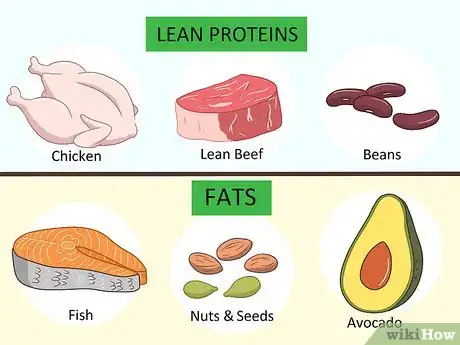
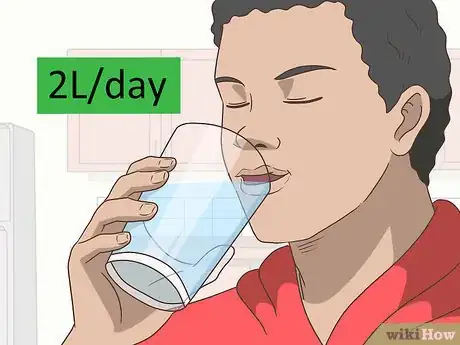
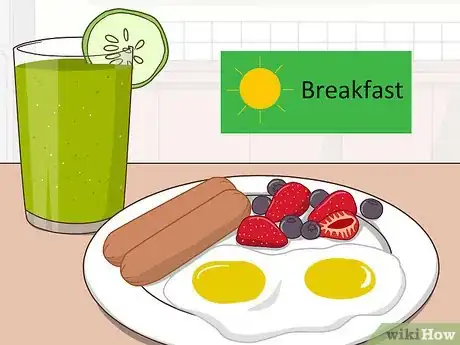
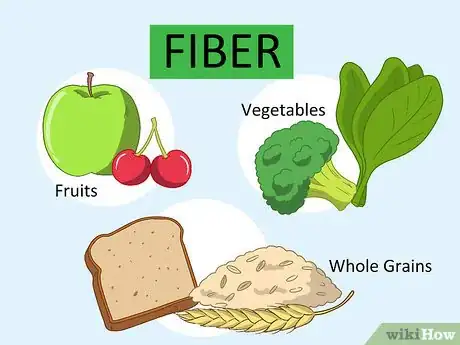

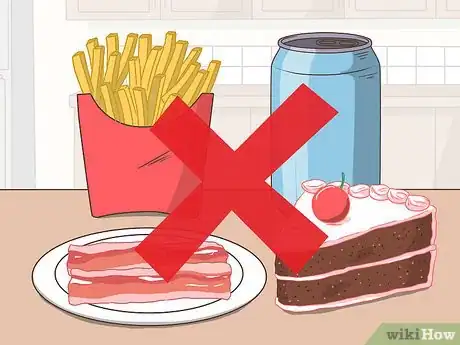
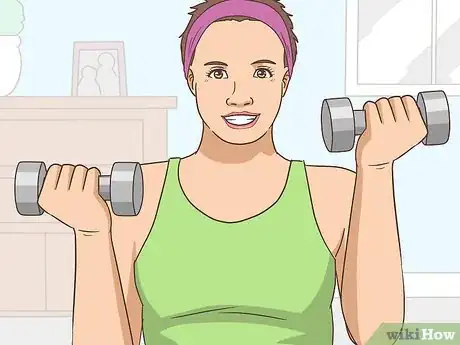
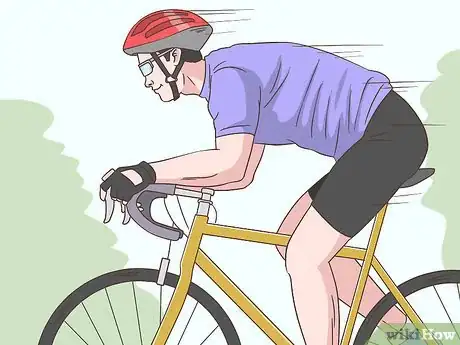

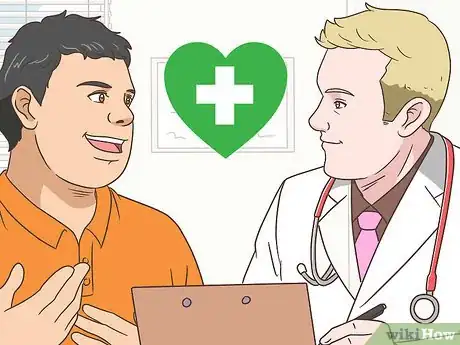
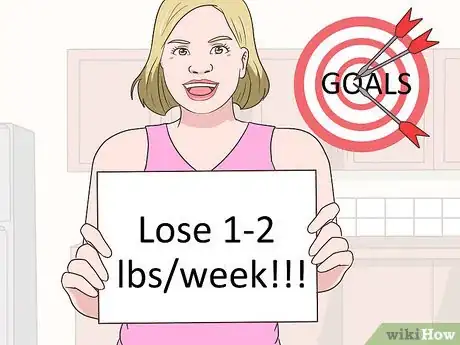






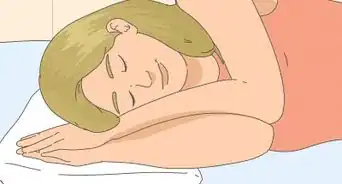
-Step-12.webp)
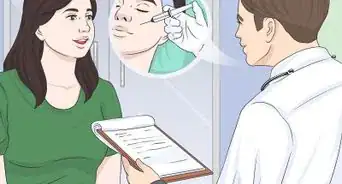
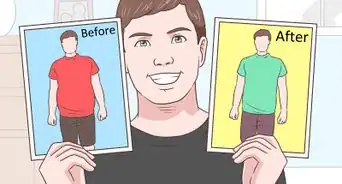
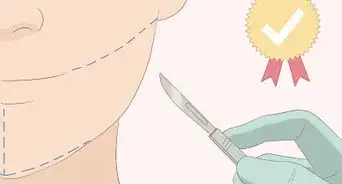
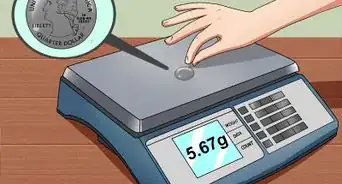
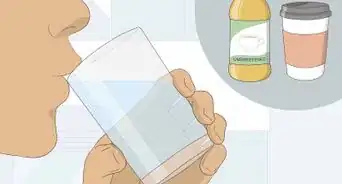

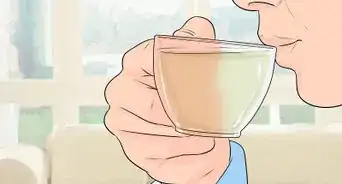
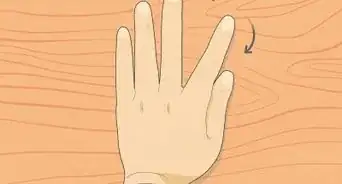

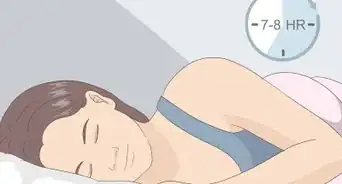










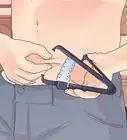
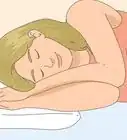
-Step-12.webp)


































